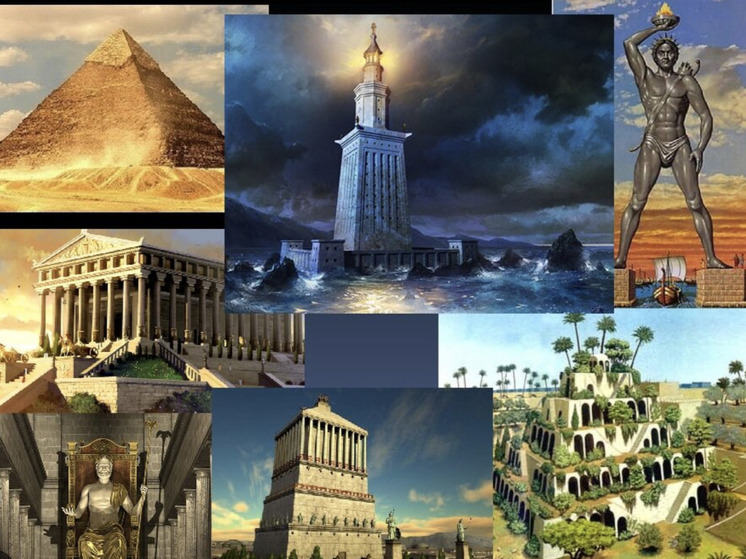From the existing Pyramid to the mystical Hanging Gardens
Artificial intelligence has the ability to bring back to life the seven ancient wonders of the world, such as the Colossus of Rhodes and the Hanging Gardens of Babylon. Using the imagine generator, AI showed how historical disappeared buildings might look in the modern world.

With the exception of the Great Pyramid of Giza, various factors such as wars, the decline of civilizations and natural disasters have, over time, led to the loss of almost all ancient structures on the list of the Seven Wonders of the World.
The Great Pyramid of Giza is a miracle that still attracts tourists. It took 27 years to complete. The ancient Egyptians of the time of Pharaoh Khufu carried stones weighing up to 2.5 tons each.
Over time, most of the smooth white limestone cladding was removed, reducing the height of the pyramid from 146.6 meters to 138.5. Artificial intelligence has restored the top of the pyramid.
Another miracle, not preserved, like many others, which will be discussed further, is a statue of Zeus made of gold and ivory, 12 meters high, that once adorned the temple at Olympia. The 11th-century Byzantine historian Georgios Kedrenos records a tradition that the statue was transported to Constantinople, where it was destroyed in the great fire of the palace of Lausa in 475 AD.
An AI-generated image of the Colossus of Rhodes statue shows the harbor of the Greek island of Rhodes in its exact location, including people to give an idea of what the colossus might have looked like today.
In 226 BC AD There was an earthquake, as a result of which the colossal statue of the sun god Helios collapsed to its knees after standing for 54 years. Researchers now believe that she stood on a pedestal near the entrance, welcoming arriving ships.
The AI also depicted a temple to Artemis, which was built and destroyed three times. At first, the temple became a victim of Herostratus, who set it on fire, striving for glory. Then the Goths, fleeing from the Romans, destroyed it as they passed by. Its final demise occurred in 401 AD, when a crowd of Christians demolished it, leaving only the foundations and a lone column, which are still visible today.
Artificial intelligence has not forgotten about the famous lighthouse itself, which towered about 106 meters on the island of Pharos in the Alexandria harbor of Ancient Egypt.
Built during the reign of Ptolemy II Philadelphus (280-247 BC), the structure was created to demonstrate the intellectual achievements of the world, revealing its mathematical and geometric foundations. However, the lighthouse gradually fell into disrepair after three earthquakes between 965 and 1323 AD.
One of the wonders of the world, recreated by AI, is the structure that gave rise to the term «mausoleum». Built in 350 BC as the tomb of Mausolus, ruler of Caria in ancient Asia Minor, the structure combined design elements from Greek, Near Eastern and Egyptian traditions, using Anatolian and Pentelic marble. However, the mausoleum collapsed due to a series of earthquakes between the 12th and 15th centuries. It was the last of the six wonders of the ancient world to be destroyed.
One of the most mystical wonders of the world, which was resurrected by artificial intelligence, is the Hanging Gardens of Babylon with intricate terraces, stunning water features and floating plants. Legend has it that they were located about 80 kilometers south of modern Baghdad in Iraq.
However, historical references to the gardens are found exclusively in ancient tales. According to one version, the Babylonian emperor Nebuchadnezzar built the gardens for his wife Amytis. Surprisingly, there is no mention of gardens in any texts written by the emperor or his wife. If these gardens had actually existed, they would have met their end when the Achaemenid Empire conquered Babylon in 539 BC.

























































Свежие комментарии